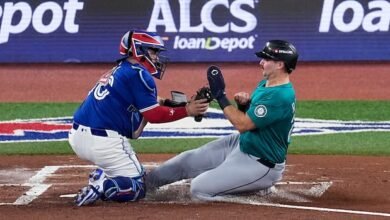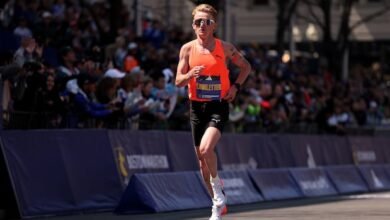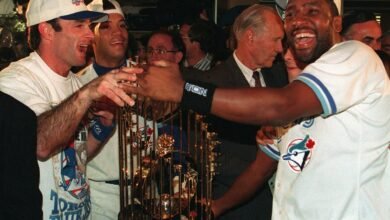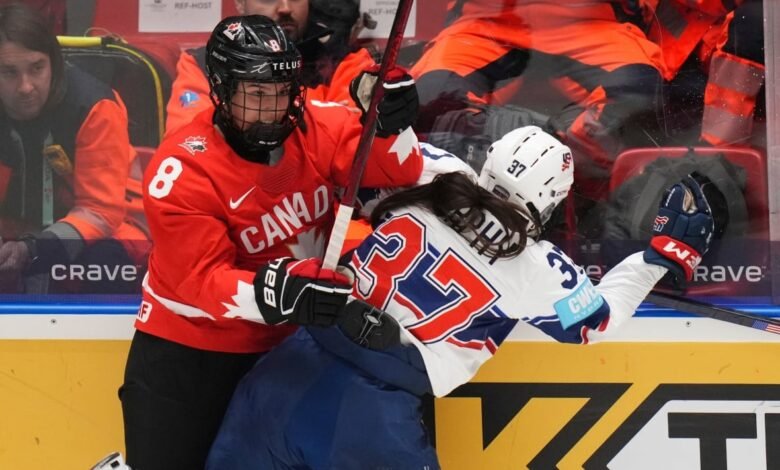
Nearly four years ago, as the Canadian women’s hockey team worked toward an Olympic gold medal in Beijing, a teenaged Chloe Primerano would record the late-night games at home.
She’d get her family to keep the score a secret, until she could watch it after school.
“I always wanted to go to the Olympics, but seeing that just made me really want to actually get there one day,” Primerano said.
Now 18, Primerano is one of 30 players trying to secure a spot on the Olympic team that will go to Italy in February to try to defend gold. She’s working to make the team in between her NCAA season at the University of Minnesota. She’s in her second college season, after graduating from high school a year early.
The defender with a hockey IQ beyond her years is now living and training with the players she watched just a few years ago. At the team’s first training block in Calgary, Primerano lived in a house with with Marie-Philip Poulin and Laura Stacey.
The captain smiled when asked about Primerano, who she described as “a great kid.” Should Primerano make the team, she’d be the youngest to do it since Poulin in 2010.
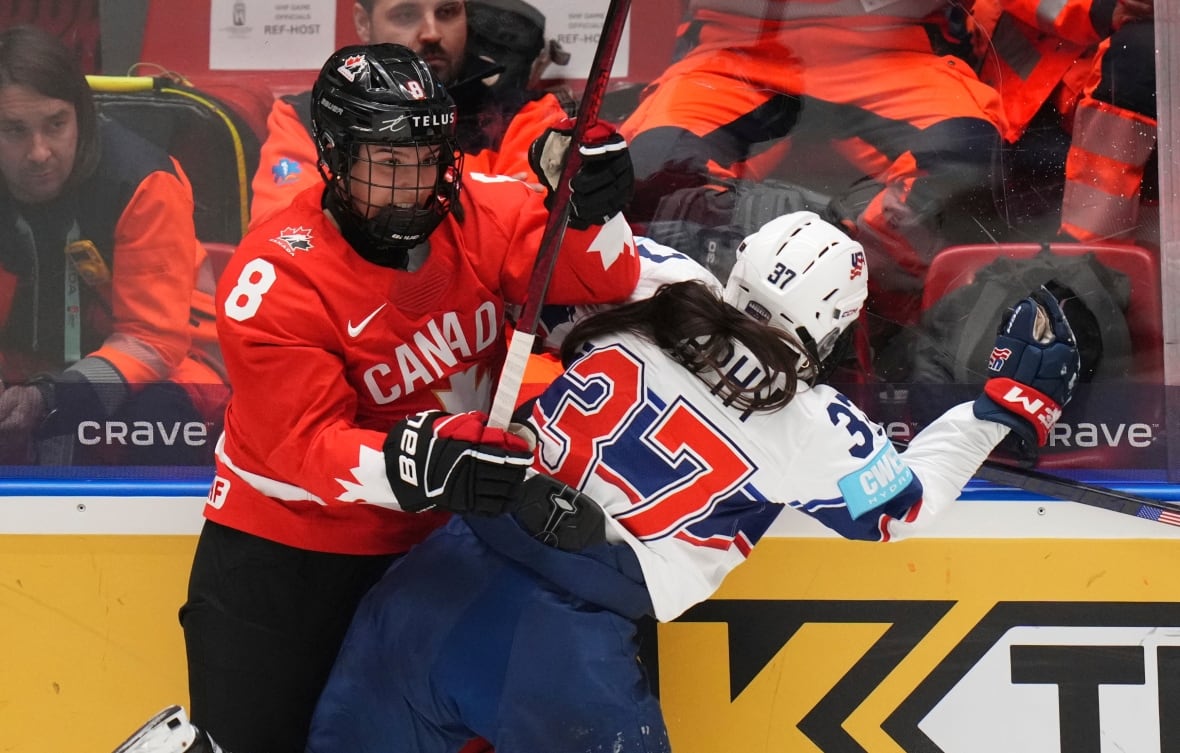
“The way she plays just says it all,” Poulin said. “She’s so skilled at the way she moves the puck, the way she shoots, the way she skates with it. It’s very impressive to see. The future is quite bright for her and I’m very excited to see what’s ahead.”
Living together in rented homes instead of hotels is one way the Canadian team is trying to make the most of an Olympic year with fewer opportunities to get together.
But now, Olympic training must be built around the PWHL season, which begins on Nov. 21 and will pause at the end of January for the Olympics. The Canadians will play only four games together before the Games, all as part of the Canada-U.S. Rivalry Series: two in November, and another two in December.
Life after centralization
Since the PWHL was created in the summer of 2023, Hockey Canada started reimagining how this Olympic team would be built: how to maintain the chemistry and cohesion that came from centralization, without overburdening players who had a full season of league play ahead of them.
That has meant putting a lot of thought into things like how often players should be on the ice and how Olympic camp might impact summer development, all with an eye toward preparing players for what could be the busiest season of their hockey careers.
“We need them to be healthy in the PWHL, so managing what that looks like and managing also volumes and loads, it’s a pretty complex matter that has a lot of experts weighing in on what we can do, what it should look like to maximize our athletes,” the Canadian team’s general manager, Gina Kingsbury, said in an interview in July.
They settled on three training blocks sprinkled throughout the country this fall. The second began earlier this week in Toronto, based at the Ford Performance Centre in Etobicoke, where the Toronto Sceptres train. The final training block begins at the end of October in Montreal.
For Blayre Turnbull, an assistant captain who is looking to make her third Olympic team, the move away from centralization comes with both benefits and challenges. One advantage is that players get to play high-level hockey in a league setting with the PWHL, something they’d always wanted.
“The disadvantage is that we only have a limited amount of time together with the national team,” she said. “The condensed centralization just makes everything a bit more meaningful. So all of our practices are more meaningful, all of our meetings are more meaningful and I think everyone’s really taken pride in making the most of our short time together here before our PWHL season gets started.”
That’s one thing you don’t get when watching players compete for their individual teams in the PWHL.
“You’ve got to be very aware of the little chemistry that’s forming, whether it’s in a simple little practice or it’s something off ice or in their Airbnbs as they are preparing for these camps,” Ryan said. “I think it’s really, really important to just be aware of what’s going on.”
Changing the national team landscape
The PWHL hasn’t just changed how the Canadian team will prepare for the Olympics. It’s also impacted who could be on the team.
With more than two months of league play before the Olympics begin, there’s always the risk of injury for top players.
It’s also created a stage for people to prove they should be on the team. Players like Watts, Sophie Jaques, Kati Tabin and Hannah Miller all earned invites to the Canadian team’s camp based on strong play in the PWHL.
“That’s basically the only reason I’m here is because of the PWHL,” Miller said. “It’s best-on-best every night. I think it’s kind of changing the landscape of the national teams. I think that’s great.”
Miller was set to make her senior national team debut at the world championship in April. But the forward, who previously competed for the Chinese national team, was deemed ineligible by the IIHF.
As she worked on the ice on Thursday, she was awaiting word from the IIHF about whether she’ll be eligible to play for Canada at the Olympics, should she make the team.
It’s just one piece of the puzzle for the Canadian staff. In a unique year, Ryan said they’ve looked to the team’s leaders. They play a role in determining who lives together, as the group tries to build chemistry and bonds.
For younger players like Primerano, it means she doesn’t have to look far for advice on the pressure of trying to make an elite squad. Poulin has already seen Primerano’s confidence grow through her first world championship in April to now.
“For her to be here, to be surrounded with us, to see what she’s able to do, her confidence is just going to keep growing,” Poulin said. “For me as a person, as one of the leaders on that team, I just want to be by her side. If she needs us, if she needs to lean on us, we’re right there with her.”
Source link


